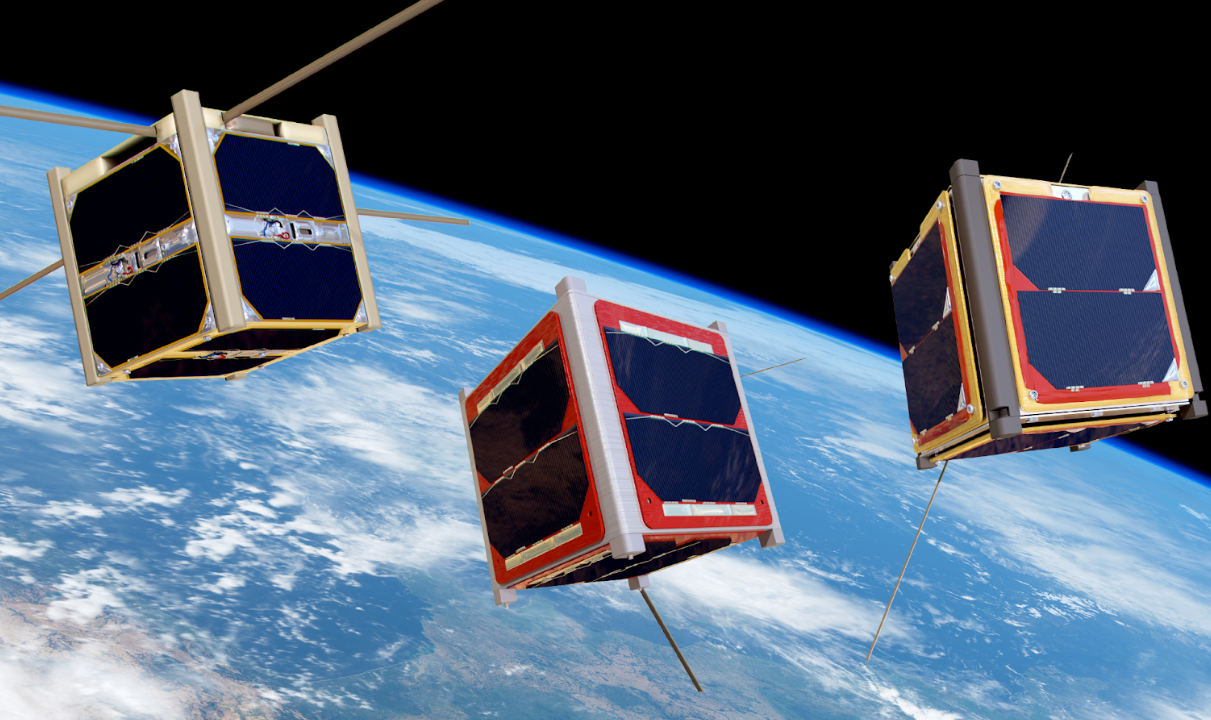CubeSat 2022 Update

Cosmic Radiation Deflection for CubeSat Application
Cosmic radiation consists of high energy protons and atomic fragments that hurtle through space at near the speed of light. These particles originate from the Sun, from within the Milky Way, and even from distant galaxies. These particles move at incredible speeds of up to 99.999% light speed and are classified as ionizing radiation. Ionizing radiation wreaks havoc on electronic equipment and can cause cancer in humans. Because of this, cosmic radiation poses a serious hazard for space travel. On Earth, the magnetic field protects us from this radiation so well that it can barely be detected at ground level. In space or on the Moon or Mars the magnetic fields are too weak to offer this protection.
The experiment being conducted by the CubeSat team at RIT involves using a high strength magnetic field to deflect the incoming cosmic radiation. The magnetic field will create a shield that will protect equipment from radiation hazards, akin to the way the Earth’s magnetic field protects its inhabitants. The experiment will be conducted in two main phases. First on the ground, and then in Low Earth Orbit (LEO).
Currently the team is in the first phase of the experiment working to develop an ideal magnetic field shape which is generated using a cubic array of Neodymium magnets. The magnets are arranged on a custom-built testing apparatus which is capable of a variety of positions and configurations. The magnets will be placed in front of a Geiger-Muller counter which can measure the amount of radiation. The team will first deflect Beta radiation from a Strontium-90 source which will represent an ideal condition since these particles deflect roughly 100 times more easily than their cosmic counterparts, which have much larger mass and energy.
In the following semesters, the team will implement the same setup on a cube satellite to test the effect of the shielding on real cosmic radiation. The experiment will need to be miniaturized, as well as possibly changing the radiation detector to a scintillation crystal type detector.
This experiment is unique since it is drastically different than traditional approaches to radiation shielding using dense mass shielding like lead. In the case of strong cosmic radiation, serious issues can arise when using mass shielding. In particular some of the cosmic particles may have so much energy that mass shielding can result in the scattering (spallation) of far worse particles. Using the technique of magnetic deflection avoids this problem entirely since nothing will be directly interacting with the particles other than the magnetic field. Another issue with mass shielding is that it is much heavier than a magnetic shielding device. The CubeSat team believes that this experiment has the potential to reduce the damaging effects of cosmic radiation for equipment and personal while traveling in space or when operating on the Moon or on Mars.
At Imagine RIT, the cube satellite team will display infographics on how the experiment works, as well as the math that goes on behind the scenes. There test stand with magnets will be on display, along with the Geiger counter which will be hooked up to a laptop displaying a live feed of the ambient background radiation. There will also be various MATLAB programs on display which calculate magnetic field strength. The Cube Satellite team has also become a part of the BluShift-MaxIQ suborbital launch challenge where we are tasked with designing a small 10x10x2cm payload which will be launched sub-orbitally in late august. The board for this payload will be on display, along with information about the launch. It will be the first time an RIT team has sent a project into outer space!